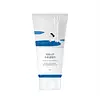What's inside
What's inside
 Key Ingredients
Key Ingredients

 Benefits
Benefits

 Concerns
Concerns

 Ingredients Side-by-side
Ingredients Side-by-side

Water
Skin ConditioningGlycerin
HumectantSodium Cocoyl Alaninate
Lauryl Hydroxysultaine
CleansingDisodium Cocoamphodiacetate
CleansingSodium Methyl Cocoyl Taurate
CleansingAcrylates/C10-30 Alkyl Acrylate Crosspolymer
Emulsion StabilisingButylene Glycol
Humectant1,2-Hexanediol
Skin ConditioningSodium Chloride
MaskingCaprylyl Glycol
EmollientCoco-Glucoside
CleansingArtemisia Annua Extract
MaskingCitric Acid
BufferingSodium Cocoyl Isethionate
CleansingBetula Platyphylla Japonica Juice
Skin ConditioningAnthemis Nobilis Flower Oil
MaskingDisodium EDTA
Pinus Sylvestris Leaf Oil
MaskingHexylene Glycol
EmulsifyingQuillaja Saponaria Bark Extract
CleansingGlyceryl Caprylate
EmollientGlyceryl Glucoside
HumectantSodium Hyaluronate
HumectantHyaluronic Acid
HumectantAscorbic Acid
AntioxidantWater, Glycerin, Sodium Cocoyl Alaninate, Lauryl Hydroxysultaine, Disodium Cocoamphodiacetate, Sodium Methyl Cocoyl Taurate, Acrylates/C10-30 Alkyl Acrylate Crosspolymer, Butylene Glycol, 1,2-Hexanediol, Sodium Chloride, Caprylyl Glycol, Coco-Glucoside, Artemisia Annua Extract, Citric Acid, Sodium Cocoyl Isethionate, Betula Platyphylla Japonica Juice, Anthemis Nobilis Flower Oil, Disodium EDTA, Pinus Sylvestris Leaf Oil, Hexylene Glycol, Quillaja Saponaria Bark Extract, Glyceryl Caprylate, Glyceryl Glucoside, Sodium Hyaluronate, Hyaluronic Acid, Ascorbic Acid
Water
Skin ConditioningGlycerin
HumectantStearic Acid
CleansingMyristic Acid
CleansingPEG-32
HumectantPotassium Hydroxide
BufferingPalmitic Acid
EmollientLauric Acid
CleansingGlyceryl Stearate
EmollientPEG-100 Stearate
Lauramide DEA
Cocamidopropyl Betaine
CleansingPotassium Cocoate
EmulsifyingSalicylic Acid
MaskingSodium Chloride
MaskingArachidic Acid
CleansingLavandula Hybrida Oil
EmollientLinalool
PerfumingDisodium EDTA
Oleic Acid
EmollientLimonene
PerfumingAsiaticoside
AntioxidantAsiatic Acid
Skin ConditioningMadecassic Acid
Skin ConditioningWater, Glycerin, Stearic Acid, Myristic Acid, PEG-32, Potassium Hydroxide, Palmitic Acid, Lauric Acid, Glyceryl Stearate, PEG-100 Stearate, Lauramide DEA, Cocamidopropyl Betaine, Potassium Cocoate, Salicylic Acid, Sodium Chloride, Arachidic Acid, Lavandula Hybrida Oil, Linalool, Disodium EDTA, Oleic Acid, Limonene, Asiaticoside, Asiatic Acid, Madecassic Acid
 Reviews
Reviews

Ingredients Explained
These ingredients are found in both products.
Ingredients higher up in an ingredient list are typically present in a larger amount.
Disodium EDTA plays a role in making products more stable by aiding other preservatives.
It is a chelating agent, meaning it neutralizes metal ions that may be found in a product.
Disodium EDTA is a salt of edetic acid and is found to be safe in cosmetic ingredients.
Learn more about Disodium EDTAGlycerin is already naturally found in your skin. It helps moisturize and protect your skin.
A study from 2016 found glycerin to be more effective as a humectant than AHAs and hyaluronic acid.
As a humectant, it helps the skin stay hydrated by pulling moisture to your skin. The low molecular weight of glycerin allows it to pull moisture into the deeper layers of your skin.
Hydrated skin improves your skin barrier; Your skin barrier helps protect against irritants and bacteria.
Glycerin has also been found to have antimicrobial and antiviral properties. Due to these properties, glycerin is often used in wound and burn treatments.
In cosmetics, glycerin is usually derived from plants such as soybean or palm. However, it can also be sourced from animals, such as tallow or animal fat.
This ingredient is organic, colorless, odorless, and non-toxic.
Glycerin is the name for this ingredient in American English. British English uses Glycerol/Glycerine.
Learn more about GlycerinChances are, you eat sodium chloride every day. Sodium Chloride is also known as table salt.
This ingredient has many purposes in skincare: thickener, emulsifier, and exfoliator.
You'll most likely find this ingredient in cleansers where it is used to create a gel-like texture. As an emulsifier, it also prevents ingredients from separating.
There is much debate on whether this ingredient is comedogenic. The short answer - comedogenic ratings don't tell the whole story. Learn more about comegodenic ratings here.
The concensus about this ingredient causing acne seems to be divided. Research is needed to understand if this ingredient does cause acne.
Scrubs may use salt as the primary exfoliating ingredient.
Learn more about Sodium ChlorideWater. It's the most common cosmetic ingredient of all. You'll usually see it at the top of ingredient lists, meaning that it makes up the largest part of the product.
So why is it so popular? Water most often acts as a solvent - this means that it helps dissolve other ingredients into the formulation.
You'll also recognize water as that liquid we all need to stay alive. If you see this, drink a glass of water. Stay hydrated!
Learn more about Water